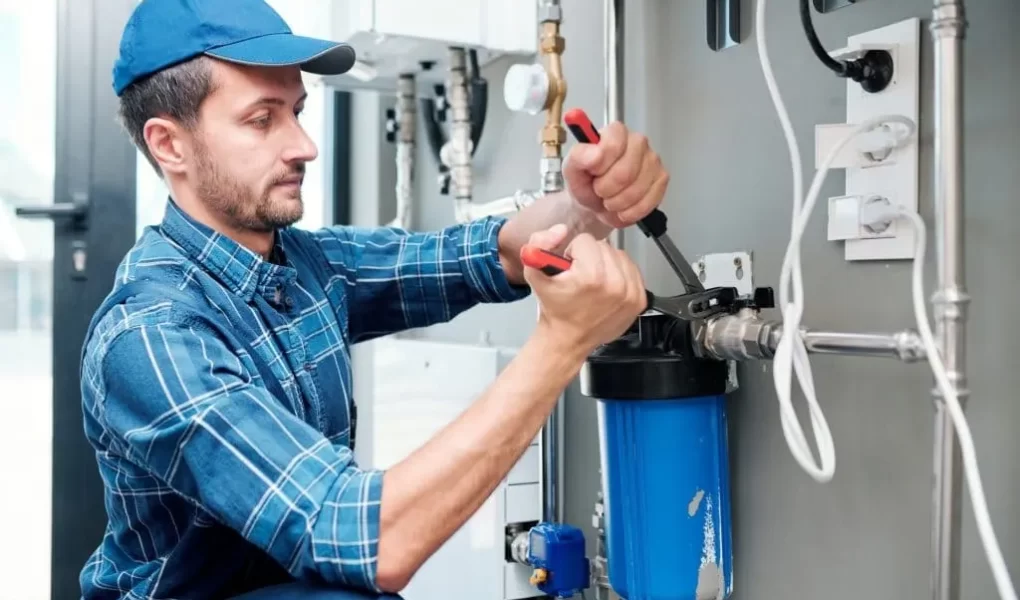Water systems play a vital role in our daily lives, providing essential services such as drinking water supply, wastewater treatment, irrigation, and industrial processes. While water systems are often associated with water flow, it’s necessary to recognise electricity’s significant role in powering and operating these systems. In this article, we’ll explore the relationship between water systems and electricity, examining how water systems use electricity, the factors influencing power consumption, and strategies for improving energy efficiency.
Powering Water Systems:

Water systems rely on electricity to perform a wide range of functions, including:
- Water Supply: Electric pumps are commonly used to extract water from underground sources, reservoirs, or treatment facilities and deliver it to homes, businesses, and industries through pipelines or distribution networks. These pumps require electricity to generate the necessary pressure to transport water over long distances and elevate it to higher elevations, such as multi-story buildings or elevated storage tanks.
- Water Treatment: Water treatment processes, such as filtration, disinfection, and chemical dosing, require electrical equipment and systems to operate effectively. Treatment plants utilise electrically powered pumps, motors, valves, and control systems to treat raw water and ensure compliance with water quality standards before distribution to consumers.
- Wastewater Management: Wastewater treatment facilities use electricity to power pumps, aerators, blowers, and other equipment essential for treating and processing wastewater before discharge into the environment. Electrical energy is also used to operate conveyance systems, such as lift stations and gravity sewers, that transport wastewater from homes and businesses to treatment plants.
- Irrigation and Agriculture: Electric pumps and irrigation systems are widely employed in agriculture for watering crops, orchards, and fields. These systems use electricity to draw water from wells, rivers, or reservoirs and distribute it to irrigation channels, sprinklers, or drip emitters to support plant growth and cultivation.
- Industrial Processes: Many industries, such as manufacturing, mining, and food processing, rely on water for various production processes. Electrically powered pumps, boilers, cooling towers, and water treatment systems are integral to industrial operations, helping regulate temperature, facilitate material transport, and maintain process efficiency.
Factors Influencing Power Consumption:
Several factors influence the electricity consumption of water systems:
- System Design and Configuration: The design and configuration of water systems, including the type and size of equipment used, the layout of pipelines and infrastructure, and the operational parameters, can significantly impact power consumption. Well-designed systems that minimise friction losses, optimise flow rates, and utilise energy-efficient equipment tend to consume less electricity.
- Operating Conditions: The operating conditions of water systems, such as flow rates, pressure levels, water quality, and ambient temperatures, affect the energy requirements of pumps, motors, and other electrical components. Systems operating under higher flow rates or pressures may consume more electricity to overcome friction losses and maintain desired performance.
- Pump Efficiency: The efficiency of pumps and motors used in water systems is crucial in determining power consumption. High-efficiency pumps and motors are designed to minimise energy losses and maximise performance, resulting in lower electricity consumption than less efficient alternatives.
- Control and Automation: Implementing advanced control and automation systems can help optimise the operation of water systems and reduce energy consumption. For example, variable frequency drives (VFDs) allow for precise control of pump speeds and flow rates, enabling operators to match system demand more closely and avoid energy wastage.
- Maintenance and Monitoring: Regular maintenance and monitoring of water system components, including pumps, motors, valves, and control systems, ensure optimal performance and energy efficiency. Proper maintenance practices, such as lubrication, alignment, and condition monitoring, can help identify and address issues contributing to increased energy consumption.
Strategies for Improving Energy Efficiency:
To enhance the energy efficiency of water systems and reduce electricity consumption, consider implementing the following strategies:
- Invest in Energy-Efficient Equipment: Upgrade outdated or inefficient pumps, motors, and other electrical components with energy-efficient alternatives that meet or exceed industry standards for performance and reliability. Look for products certified by ENERGY STAR or the U.S. Department of Energy’s Better Buildings Initiative.
- Optimise System Design: Work with experienced engineers and consultants to optimise the design and layout of water systems to minimise energy losses, reduce friction, and maximise operational efficiency. Consider factors such as pipe sizing, hydraulic balancing, and pump selection to achieve optimal system performance.
- Utilise Advanced Controls: Implement advanced control and automation systems, such as VFDs, programmable logic controllers (PLCs), and supervisory control and data acquisition (SCADA) systems, to optimise the operation of water systems and reduce energy consumption. Use real-time data and analytics to identify opportunities for energy savings and improve system performance.
- Implement Demand-Side Management: Explore strategies for managing water demand and reducing peak energy consumption, such as implementing water conservation measures, optimising irrigation schedules, and scheduling non-essential water-related activities during off-peak hours. By reducing overall water usage, you can also lower energy requirements for pumping and treatment.
- Educate and Train Personnel: Provide training and education to operators, maintenance personnel, and other stakeholders involved in the operation and maintenance of water systems. Empower staff with the knowledge and skills needed to identify energy-saving opportunities, troubleshoot issues, and implement best practices for energy efficiency.




